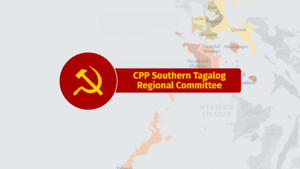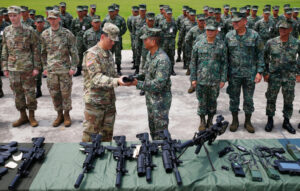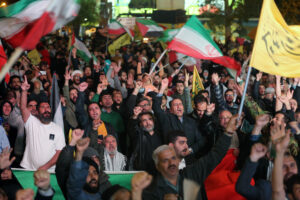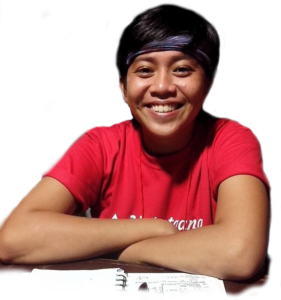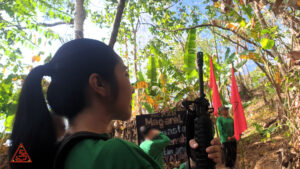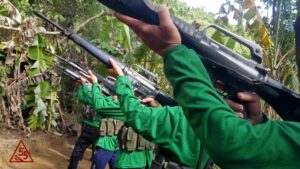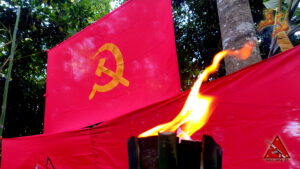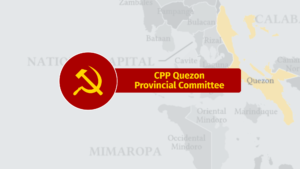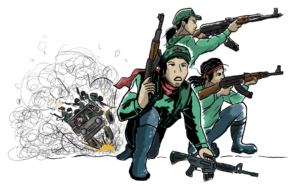Additional remarks on court decision against terrorist label vs CPP/NPA
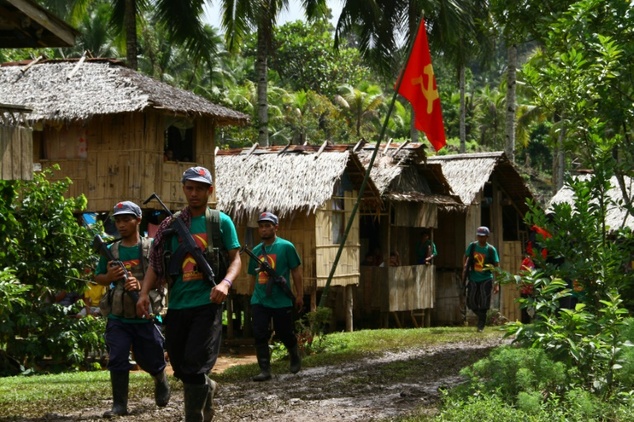
As we stated earlier, the Communist Party of the Philippines is not governed by the 1987 constitution and is not under the jurisdiction of the courts of the Government of the Republic of the Philippines (GRP). The CPP and the New People’s Army functions under the laws of the people’s democratic government and performs its duties in line with the national and democratic interests of the Filipino people.
However, we take it as our continuing responsibility to the public to expose the lies being promoted by the GRP, especially by its Armed Forces of the Philippines. These lies were presented by the GRP’s Department of Justice (DOJ) before the Manila RTC in its failed case to stick the “terrorist” label against the CPP/NPA.
The DOJ cited nine cases of “attacks against civilians”. The Manila RTC dismissed these incidents as not constituting “terrorism” because these did not “cause widespread terror” among the population. Understandably, the court did not delve into each case, and relied mainly on the testimonies of the DOJ, primarily the AFP and its agents.
To shed further light and help the public deepen their understanding of the ongoing war in the country, we are presenting below additional details on five of these cases, even as we further consolidate information on the others.
1) killing of Bandi Astudillo and Zaldy Ibañez on March 19, 2020.
Contrary to the DOJ’s claims, Astudillo and Ibañez are not civilians. They are members of the local paramilitary group Bagani, and are active in fighting the NPA, and thus, were legitimate military targets. They actively recruited Cafgu members, engaged in spying against the people, and mulcted funds from the AFP’s E-CLIP program using the names of residents as “surrenderees.”
Furthermore, Bandi was charged for raping his own grandchild, and for an attempted rape of his niece. Ibañez, on the other hand, was facing murder and robbery charges.
They were engaged in illegally claiming Lumad land and selling these to unsuspecting buyers. Astudillo drew the ire of the people in Barangay Magruyong for having put up a toll gate along the barangay road going to Sitio Inadan where everyone who passed through had to pay him fees. He used his armed might to make life difficult for small village loggers, even as he and his family were known for wanton cutting of trees.
Revolutionary authorities in the area gave Astudillo and Ibañez several warnings (in 2003, 2006 and 2012) and asking to stop their involvement in counterinsurgency and criminal ways. Instead of heeding fair warnings, both continued in their anti-people activities.
2) ambush of Jomar Bocales and company on October 4, 2021
Jomar Bocales was also not a “civilian victim,” as claimed in the case of the DOJ against the CPP. He and his companions, Alberto dela Peña and Artemio Moldez, were armed when ambushed by an NPA unit in Surigao del Sur. They fought back fiercely but died in battle.
Bocales is the known principal leader of the paramilitary Magahat group that is armed, trained and works for the 75th IBPA. Dela Peña and Moldez were Cafgu members.
Bocales is known for leading the Magahat paramilitary group that carried out the bloody Lianga Massacre on September 1, 2015, where he and his men killed Emerito Samarca, Executive Director of the community school Alcadev, Datu Bello Sinzo and Dionel Campos, community leaders of the group MAPASU.
Magahat is also known for gross violations of the Lumad people’s rights. They are responsible for conscription of Cafgu members, torture, rape, robbery and murder. They serve as guides in military operations which have repeatedly forced the evacuation of Lumad communities, in an effort to pave the way for the entry of mining companies in the Andap Valley Complex.
3) wounding of teacher Eli Apacible in Tandag City, Surigao del Sur
Eli Apacible is an elementary school teacher in Sitio Hitaob, Barangay Awasyan, Tandag City. He is a civilian and is not a target of an NPA military action. Unfortunately, on October 16, 2020, he was in the company of soldiers, and donned a military hat, when an NPA team mounted a harassment operation against the soldiers who were occupying the school grounds at that time. The NPA acknowledged its error of failing to identify the presence of a non-military person. At the same time, however, the incident puts to light how military encampment in communities, including schools and barangay centers, puts civilian lives to risk.
4) abduction of seven civilians, including Ryard Badiang who was later beheaded
Ryard Badiang was an active CAFGU element in Sitio Ebuan, Barangay Mampi, Lanuza, Surigao del Sur. He was a target of NPA operations in the area against armed elements, spies and assets of the AFP who are active in the military’s campaign of repression in the area.
On May 30, 2019, Badiang was with “Batik”, a 15-year old CAFGU member. Both were captured by an NPA team. There were five other residents in the place, but were allowed to return to their homes after verifying their identities as residents in the village. Although he was active in the CAFGU, Batik was allowed to return home, in consideration of the fact that he was a minor. He was tasked to inform the family of Badiang where his remains can be retrieved.
It is not true that Badiang was beheaded. It was unfortunate that the family, soldiers and CAFGU members did not retrieve Badiang’s remains until more than a week later. During this time, it is likely that wild animals caused the dismemberment of his corpse, which would have been already at an advanced state of decomposition.
5) burning of chapel and residential houses in Misamis Oriental
On May 28, 2020, the military claimed in a press statement that an NPA unit was behind the burning of a chapel and of residential homes in Barangay Limunda, Opol, Misamis Oriental. In the case presented before the Manila RTC, the DOJ cited the testimony of residents who surmised that the armed men were NPA members because they wore “boots and dark-colored outfits.”
This is actually a completely fabricated report. According to the NPA regional command in North Central Mindanao, there was no NPA unit in the area at that time. Based on information on the ground, the incident likely involved local bandits and rival clans in the area.
As shown above, these incidents all involve legitimate acts of war aimed at military targets, specifically, agents and paramilitary forces who are armed, trained and under the payroll of the AFP, and involved in criminal and anti-people activities. To malign the NPA, the AFP regularly misrepresent its spies, agents and paramilitary forces as “civilians.”
These acts are in accordance with the Declaration of Undertaking to Apply the Geneva Conventions of 1949 and Protocol I of 1977 issued by the National Democratic Front of the Philippines (NDFP) in 1996.
The NPA abides by this declaration in the conduct of hostilities against its armed adversaries in order to protect the civilian population and secure the rights of hors de combat.
In the above mentioned declaration, the NDFP identified units, personnel and facilities of the AFP, the Philippine National Police, paramilitary forces and their intelligence personnel as legitimate targets of the military attacks of the NPA.

